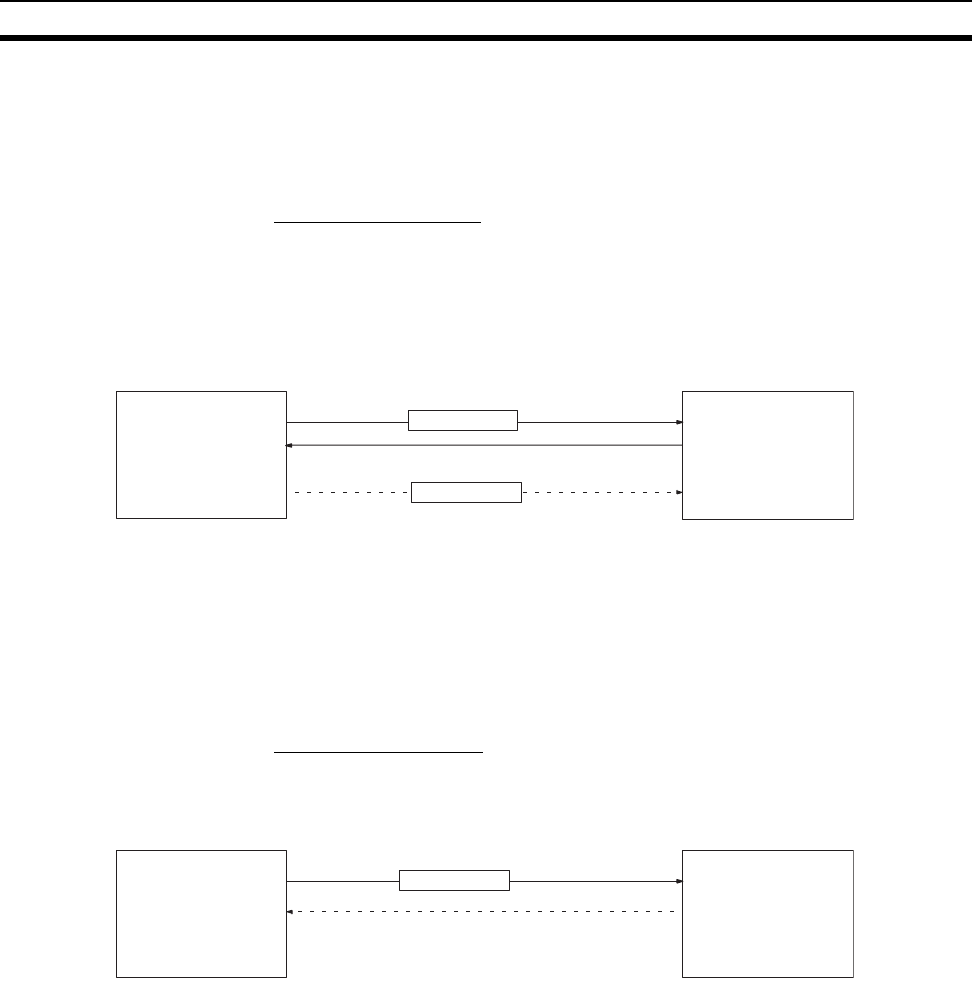
100
Protocol Overview Section 6-2
6-2 Protocol Overview
6-2-1 Differences between TCP and UDP
There are differences in the socket services between TCP and UDP.
■ TCP Communications
The following procedure is followed each time data is transmitted to ensure
that the data arrives normally at the remote node:
1,2,3... 1. The remote node returns ACK when data is received normally.
2. The local node sends the next data after it receives ACK, or it resends the
same data if ACK is not returned within the specified time.
With the TCP protocol, the remote IP address and remote TCP port number
are specified when an open request is made for a socket. When a send
request is made, the number of bytes to send and the send data are specified.
When a receive request is made, the number of bytes to receive is specified.
With the TCP protocol, communications with another remote device are not
possible until the socket that was opened has been closed.
■ UDP Communications
Data is simply sent to the remote node. Unlike TCP, the reception of data is
not checked and data is not resent. To increase communication reliability, data
resends must be programmed by the user in user application.
With the UDP protocol, the remote IP address and remote UDP port number
are not specified when an open request is made for a socket. When a send
request is made, the remote IP address, the remote UDP port number, the
number of bytes to send, and the send data are specified. When a receive
request is made, the number of bytes to receive is specified. (The response
data shows from which IP address and UDP port number the received data
was sent.)
With the UDP protocol, communications with another remote device are
possible even if the socket that was opened is not closed.
6-2-2 Opening TCP Sockets
To achieve highly reliable data communications, TCP establishes a virtual
communications circuit between the two nodes before starting data
transmissions. The virtual communications circuit is known as a “connection.”
Local node
Transmitted data
ACK (acknowledge)
Remote node
Send
request
made.
Receive
request
made.
Resent data
when ACK is not returned
Local node Remote node
Transmitted data
ACK (acknowledge: only when
processed by application)
Send
request
made.
Receive
request
made.


















